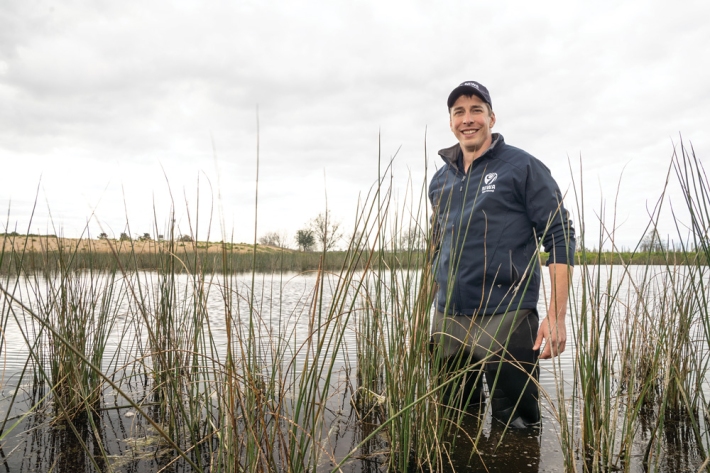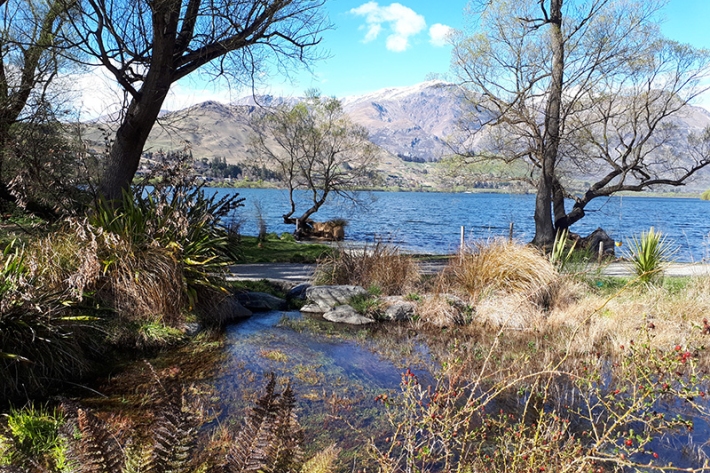Often described as the kidneys of the landscape, wetlands are important for filtering nutrients, controlling floods, and as wildlife habitats. Ten percent of New Zealand was once covered by wetlands - 90 percent of these original wetlands have now been drained.
Constructed wetlands are a mitigation system that can reduce loads of sediment, nutrients and microbes such as E. coli. This can improve the water quality exiting the wetland, and the water quality of downstream water bodies.
Local and international evidence shows that well-designed wetlands are capable of reducing the loads of nitrate and contaminants. In warm areas of New Zealand, removal of nitrate load will range from 25 up to 50 percent as wetland size is increased from 1% to 5% of the contributing catchment area. In cool areas nitrate load removal will be a little lower, in the range of 20 to 40 percent.
Constructed wetlands can also buffer flows, which is likely to decrease the risk of downstream flooding and provide a valuable habitat for native species.
Research update
In 2020 NIWA researchers launched a four-year, $1.95 million project, funded by the Ministry of Primary Industries, to custom-build and measure the performance of wetlands for mitigating pollution from rural run-off.
NIWA worked alongside Tasman, Taranaki, Hawke’s Bay, Bay of Plenty and Canterbury councils and landowners to identify sites and design the wetland systems, advising on plant selection, estimating contaminant removal, and installing monitoring equipment.
The councils are co-funding and assisting with wetland monitoring, which will help improve understanding of the ability of constructed wetlands to reduce the loads of nutrients, suspended solids and faecal microbes into waterways. In-kind support from landowners and organisations such as Fonterra and DairyNZ, has helped fund wetland construction.
In response NIWA released its Constructed Wetland Practitioner Guide. It is a joint initiative with DairyNZ, to help landowners through the process of designing, constructing and maintaining wetlands.
-

Constructed wetland guidelines
Constructed wetlands are a water quality restoration tool that can reduce levels of sediment, nutrients and microbes such as E. coli.
Case studies
-

Building back wetlands
Publication article20 June 2023This new 3-hectare wetland has been constructed from scratch on a former dairy property near Maketu. -

Better outcomes for downstream water quality
Publication article15 September 2022The finishing touches have just been made on a NIWA-led project which aims to prove the performance of constructed wetlands on New Zealand farms. -

Updating a plan to restore Lake Hayes
Publication article16 June 2022A NIWA study has helped secure funding to restore the water quality of Lake Hayes in the Wakatipu Basin in Central Otago.



